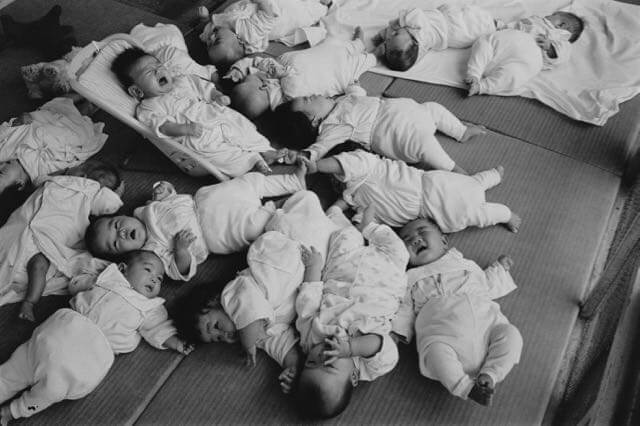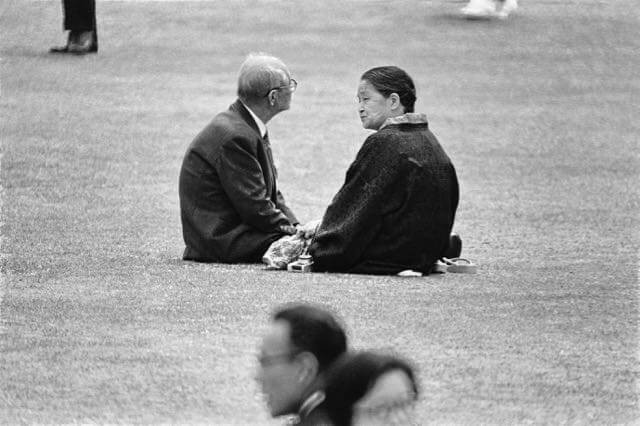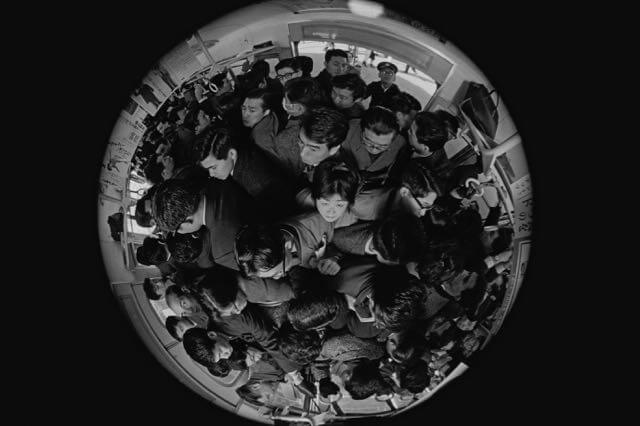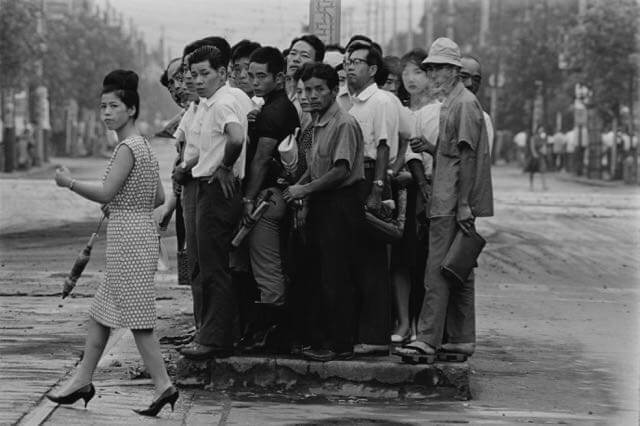A Look Back Over the Work of Haruo Tomiyama, Legend of Photojournalism
From 1 August until 31 October 2018, Fujifilm Square in Tokyo showcased original prints from the 'Gendai Gokan' series.
Haruo Tomiyama, who passed away in 2016 at the age of 81, was an important figure in photojournalism. In the 60s, back when Japan was faced with significant societal and political changes, the photographer produced a series on the subject of overpopulation entitled ‘Gendai Gokan’ for the Asahi Shimbun, one of Japan’s main daily newspapers.
Satire on social conditions
His photographs, depicting a compact crowd of salarymen in an underground carriage or an elderly couple dressed in kimonos wandering on the grass in a park, are accompanied by essays by famous writers such as Kenzaburō Ōe (winner of the Nobel Prize for Literature, 1994). This series became a success thanks to its clever satire of social conditions in Japan, while the country was caught up in rapid economic growth and on the verge of a revolution in societal values.
From 1 August until 31 October 2018, Fujifilm Square in Tokyo exhibited original prints from the ‘Gendai Gokan’ series, selected and reproduced in 1998 by Haruo Tomiyama himself.


©Haruo Tomiyama Archives


©Haruo Tomiyama Archives
Fujifilm Square
fujifilmsquare.jp/en/detail/18080104.htmlTRENDING
-
The Tattoos that Marked the Criminals of the Edo Period
Traditional tattoos were strong signifiers; murderers had head tattoos, while theft might result in an arm tattoo.

-
Paris, Tokyo: Robert Compagnon
With his co-chef and talented wife, Jessica Yang, Robert Compagnon opened one of the top new restaurants in Paris: Le Rigmarole.
 3:31
3:31 -
The Story of Sada Yacco, the Geisha who Bewitched Europe
Described by Dazed magazine as the first beauty influencer, she has been restored to her former glory since 2019.

-
Ito Jakuchu's Naturalist Paintings
From 15 September until 14 October 2018, the Petit Palais showcased the artist's iconic ‘Images of the Colourful Realm of Living Beings’.

-
Chiharu Shiota, Red Threads of the Soul
Last year, more than 660,000 people visited the retrospective 'Chiharu Shiota: The Soul Trembles' exhibit at the Mori Art Museum.





